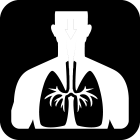 Likely to cause
Likely to cause
 Can cause
Can cause
 May cause
May cause
Methyl alcohol
CAS: 67-56-1
How can this chemical affect my health?
Acute (Short Term) Effects

Toxic to Humans & Animals – Toxicity or fatality on contact, ingestion or inhalation to humans and other mammals.

Eye Irritation – Irritation or serious damage to the eyes.
Data sources
Direct Hazard » Toxic to Humans & Animals
These sources refer directly to this chemical:
- FIFRA Registered PesticideUS EPA - OPP - Registered PesticidesUS Environmental Protection Agency (US EPA)
- H301 - Toxic if swallowed [Acute toxicity (oral) - Category 3]EU - GHS (H-Statements) Annex 6 Table 3-1European Union / European Commission (EU EC)
- H311 - Toxic in contact with skin [Acute toxicity (dermal) - Category 3]EU - GHS (H-Statements) Annex 6 Table 3-1European Union / European Commission (EU EC)
- H331 - Toxic if inhaled [Acute toxicity (inhalation) - Category 3]EU - GHS (H-Statements) Annex 6 Table 3-1European Union / European Commission (EU EC)
- H311 - Toxic in contact with skin [Acute toxicity (dermal) - Category 3]GHS - KoreaRepublic of Korea - National Institute of Environmental Research (NIER)
- H331 - Toxic if inhaled [Acute toxicity (inhalation) - Category 3]GHS - KoreaRepublic of Korea - National Institute of Environmental Research (NIER)
- H301 - Toxic if swallowed [Acute toxicity (oral) - Category 3]GHS - KoreaRepublic of Korea - National Institute of Environmental Research (NIER)
- H302 - Harmful if swallowed [Acute Toxicity (oral) - Category 4]GHS - JapanGovernment of Japan
- H300 - Fatal if swallowed [Acute toxicity (oral) - Category 1 or 2]GHS - MalaysiaMalaysia Department of Occupational Safety and Health
- H311 - Toxic in contact with skin [Acute toxicity (dermal) - Category 3]GHS - MalaysiaMalaysia Department of Occupational Safety and Health
- H331 - Toxic if inhaled [Acute toxicity (inhalation) - Category 3]GHS - MalaysiaMalaysia Department of Occupational Safety and Health
- H301 - Toxic if swallowed [Acute toxicity (oral) - Category 3]GHS - AustraliaSafe Work Australia
- H311 - Toxic in contact with skin [Acute toxicity (dermal) - Category 3]GHS - AustraliaSafe Work Australia
- H331 - Toxic if inhaled [Acute toxicity (inhalation) - Category 3]GHS - AustraliaSafe Work Australia
- H336 - May cause drowsiness or dizziness [Specific target organ toxicity - Single exposure - Category 3 (Narcotic effects)]GHS - JapanGovernment of Japan
- Acute dermal toxicity category 3GHS - New ZealandTe Mana Rauhī Taiao (Aotearoa New Zealand EPA)
- Acute inhalation toxicity category 3GHS - New ZealandTe Mana Rauhī Taiao (Aotearoa New Zealand EPA)
- Acute oral toxicity category 3GHS - New ZealandTe Mana Rauhī Taiao (Aotearoa New Zealand EPA)
Direct Hazard » Eye Irritation
These sources refer directly to this chemical:
- H319 - Causes serious eye irritation [Serious eye damage/irritation - Category 2]GHS - KoreaRepublic of Korea - National Institute of Environmental Research (NIER)
- Eye irritation category 2GHS - New ZealandTe Mana Rauhī Taiao (Aotearoa New Zealand EPA)
- H319 - Causes serious eye irritation [Serious eye damage / eye irritation - Category 2]GHS - JapanGovernment of Japan
Chronic (Long Term) Effects

Birth Defects – Harm to the developing child including birth defects, low birth weight and biological or behavioral problems that appear as the child grows.

Other Health Effects – Can cause serious damage on contact or ingestion.

Endocrine Disruption – Interference with the endocrine system, which plays a crucial role in metabolism, development, growth, reproduction and behavior.

Reproductive Harm – Disruption of the male or female reproductive systems, changing sexual development, behavior or functions, decreasing fertility, or resulting in loss of the fetus during pregnancy.
Data sources
Direct Hazard » Birth Defects
These sources refer directly to this chemical:
- Developmental toxicityCA EPA - Prop 65California Environmental Protection Agency (CA EPA)
- Clear Evidence of Adverse Effects - Developmental ToxicityUS NIH - Reproductive & Developmental MonographsUS Department of Health & Human Services - National Institutes of Health (US NIH)
- Pregnancy Risk Group CMAKMAK Commission of Germany (Deutsche Forschungsgemeinschaft)
Direct Hazard » Other Health Effects
These sources refer directly to this chemical:
- H370 - Causes damage to organs [Specific target organ toxicity - single exposure - Category 1]EU - GHS (H-Statements) Annex 6 Table 3-1European Union / European Commission (EU EC)
- H370 - Causes damage to organs [Specific target organ toxicity - Single exposure - Category 1]GHS - KoreaRepublic of Korea - National Institute of Environmental Research (NIER)
- H372 - Causes damage to organs through prolonged or repeated exposure [Specific target organs/systemic toxicity following repeated exposure - Category 1]GHS - JapanGovernment of Japan
- H370 - Causes damage to organs [Specific target organs/systemic toxicity following single exposure - Category 1]GHS - JapanGovernment of Japan
- H370 - Causes damage to organs [Specific target organ toxicity - single exposure - Category 1]GHS - MalaysiaMalaysia Department of Occupational Safety and Health
- H370 - Causes damage to organs [Specific target organ toxicity - single exposure - Category 1]GHS - AustraliaSafe Work Australia
- Specific target organ toxicity - repeated exposure category 1GHS - New ZealandTe Mana Rauhī Taiao (Aotearoa New Zealand EPA)
Direct Hazard » Endocrine Disruption
These sources refer directly to this chemical:
- Potential Endocrine DisruptorTEDX - Potential Endocrine DisruptorsThe Endocrine Disruption Exchange (TEDX)
Direct Hazard » Reproductive Harm
These sources refer directly to this chemical:
- Reproductive toxicity category 2GHS - New ZealandTe Mana Rauhī Taiao (Aotearoa New Zealand EPA)
- H360 - May damage fertility or the unborn child [Toxic to reproduction - Category 1B]GHS - JapanGovernment of Japan
Inherent Hazards

Restricted List – This chemical is on a list from an authoritative body recommending that its use be avoided.

Flammable – Easily ignited and capable of burning rapidly.
Data sources
Direct Hazard » Restricted List
These sources refer directly to this chemical:
- HAPs subject to the Clean Air ActUS EPA - Hazardous Air PollutantsUS Environmental Protection Agency (US EPA)
- Candidate Chemical ListCA SCP - Candidate ChemicalsCalifornia Department of Toxic Substance Control (CA DTSC)
- Assessment of regulatory needsEU - PACT-RMOA SubstancesEuropean Union / European Commission (EU EC)
- V3 2014 Substance of Concern ListBIFMA - e3/level Annex B list of chemicalsBusiness and Institutional Furniture Manufacturers Association (BIFMA)
- Some SolventsGSPI - Six Classes Precautionary ListGreen Science Policy Institute (GSPI)
- Substances restricted under REACHEU - REACH Annex XVII non-CMRsEuropean Union / European Commission (EU EC)
- Ingredients that are Restricted for Use in Cosmetic ProductsHealth Canada - Cosmetic Ingredient HotlistHealth Canada
- Chemicals of High ConcernMDH - Chemicals of High Concern and Priority ChemicalsMinnesota Department of Public Health
- CoHC List (non SVHC)CPA - Chemical FootprintClean Production Action (CPA)
- Formulated Consumer ProductsC2C Certified v4.0 Product Standard Restricted Substances List (RSL) - Effective July 1, 2022Cradle to Cradle Products Innovation Institute (C2CPII)
- 2019 Substance of Concern ListBIFMA - e3/level Annex B list of chemicalsBusiness and Institutional Furniture Manufacturers Association (BIFMA)
- Annex III - Restricted SubstancesEU - Cosmetics RegulationEuropean Union / European Commission (EU EC)
- Tier 1 “Do Not Use Chemicals” for EveryoneCampaign for Safe Cosmetics’ Red List of Chemicals of ConcernCampaign for Safe Cosmetics
- 1st Round Priority ChemicalsCEPN - Chemicals Prioritized for Elimination or SubstitutionClean Electronics Production Network
- Limit of harmful substances in industrial protective coatings (GB 30981-2020)China's limit standard for volatile organic compoundsState Administration for Market Regulation - Standardization Administration of China
- Restrictions for Manufacturing ProcessGoogle Manufacturing Restricted Substances Specification (v1.3)Google
- Reportable ChemicalsMA Toxics Use Reduction Act (TURA) listed substancesMassachusetts Department of Environmental Protection
- Cosmetics & Personal Care ProductsC2C Certified v4.0 Product Standard Restricted Substances List (RSL) - Effective July 1, 2022Cradle to Cradle Products Innovation Institute (C2CPII)
- Food Contact Chemicals Database Version 5.0Food Contact Chemicals Database (FCCdb)Food Packaging Forum
- Food Contact Chemicals of Concern List (FCCoCL) - TIER 2Food Contact Chemicals of Concern (FCCoCL)Food Packaging Forum
- ZDHC - MRSL v2.0 Candidate ListZDHC - MRSL v2.0Zero Discharge of Hazardous Waste Chemicals Programme
- FSAP Food Packaging Product Stewardship ConsiderationsFSAP Food Packaging Product Stewardship ConsiderationsFood Safety Alliance for Packaging (FSAP)
- FPF Priority Substance List from FCCdbFPF Priority Substance List from FCCdbFood Packaging Forum
- MethanolGreenScreen Certified Standard for Cleaners & Degreasers RSLClean Production Action (CPA)
- Food Packaging Forum Priority Substances ListGreenScreen Certified Standard for Food Service Ware RSLClean Production Action (CPA)
- Restrictions in Manufacturing ProcessesApple Regulated Substances SpecificationApple Inc.
- Reportable Substances and Future Restrictions in Manufacturing ProcessesApple Regulated Substances SpecificationApple Inc.
- TSCA Commercially ActiveTSCA Chemical Substance Inventory (Active-Inactive)US Environmental Protection Agency (US EPA)
- GADSL Declarable or Prohibited Substances (D/P)Global Automotive Declarable Substance List (GADSL)Global Automotive Stakeholder Group (GASG)
- GreenScreen LT-1 (based on 2018 Chemical Footprint Project)GreenScreen Certified Standard for Medical Supplies & Devices Silver-Gold RSLClean Production Action (CPA)
- Restricted Substances in ProductsApple Regulated Substances SpecificationApple Inc.
- Reportable Substances and Future Restrictions in ProductsApple Regulated Substances SpecificationApple Inc.
- New Zealand Inventory of Chemicals (NZIoC)New Zealand Inventory of ChemicalsTe Mana Rauhī Taiao (Aotearoa New Zealand EPA)
- The Australian Inventory of Industrial ChemicalsThe Australian Inventory of Industrial ChemicalsAustralian Government
- Existing Chemicals ListKorea Existing Chemicals ListKorea Ministry of Environment
- IECSC-2013The Inventory of Existing Chemical Substance in China - 2013China's Ministry of Ecology and Environment
- Philippine Inventory of ChemicalsPhilippine Inventory of ChemicalsThe Philippine Government
- DSL-allEC - CEPA DSLEnvironment Canada & Health Canada (EC)
- Taiwan Existing Chemical Substance InventoryTaiwan Existing Chemical Substance InventoryTaiwan Ministry of Environment
- NICNASAustralia - National Industrial Chemicals Notification and Assessments (NICNAS)Australian Government
- All ProductsC2C Certified v4.1 Product Standard Restricted Substances - Effective July 1, 2025Cradle to Cradle Products Innovation Institute (C2CPII)
- Cosmetics and Personal Care ProductsC2C Certified v4.1 Product Standard Restricted Substances - Effective July 1, 2025Cradle to Cradle Products Innovation Institute (C2CPII)
- Japan - CSCLJapan - Chemical Substances Control LawGovernment of Japan
- Substance evaluation - CoRAPECHA - Community Rolling Action Plan (CoRAP)European Chemicals Agency (ECHA)
- Trade Union Priority List 2.0ETUC - Trade Union Priority List 2.0European Trade Union Confederation (ETUC)
- CSCP - Reportable Ingredient ListCalifornia Safe Cosmetics Program - Reportable Ingredient ListCalifornia Department of Public Health (CDPH)
- ZDHC - MRSL v3.1 Candidate ListZDHC - MRSL v3.1Zero Discharge of Hazardous Waste Chemicals Programme
- Data generation and assessmentEU - PACT-RMOA SubstancesEuropean Union / European Commission (EU EC)
- Regulatory risk managementEU - PACT-RMOA SubstancesEuropean Union / European Commission (EU EC)
Direct Hazard » Flammable
These sources refer directly to this chemical:
- H225 - Highly flammable liquid and vapour [Flammable liquids - Category 2]EU - GHS (H-Statements) Annex 6 Table 3-1European Union / European Commission (EU EC)
- H225 - Highly flammable liquid and vapour [Flammable liquids - Category 2]GHS - KoreaRepublic of Korea - National Institute of Environmental Research (NIER)
- Flammable liquids category 2GHS - New ZealandTe Mana Rauhī Taiao (Aotearoa New Zealand EPA)
- H225 - Highly flammable liquid and vapour [Flammable liquids - Category 2]GHS - JapanGovernment of Japan
- H225 - Highly flammable liquid and vapour [Flammable liquids - Category 2]GHS - MalaysiaMalaysia Department of Occupational Safety and Health
- H225 - Highly flammable liquid and vapour [Flammable liquids - Category 2]GHS - AustraliaSafe Work Australia
How does this chemical impact the environment?

Persistent – Does not break down readily from natural processes.
Data sources
Direct Hazard » Persistent
These sources refer directly to this chemical:
- PersistentEC - CEPA DSLEnvironment Canada & Health Canada (EC)
What safer alternatives are available for this chemical?
Find case studies related to substitutions for this chemical in SubsPORT, the substitution support portal.
How am I likely to be exposed to this chemical?

Ingestion

Skin contact

Inhalation
How can I protect myself from exposure to this chemical in the workplace?

Handle with gloves

Respirator